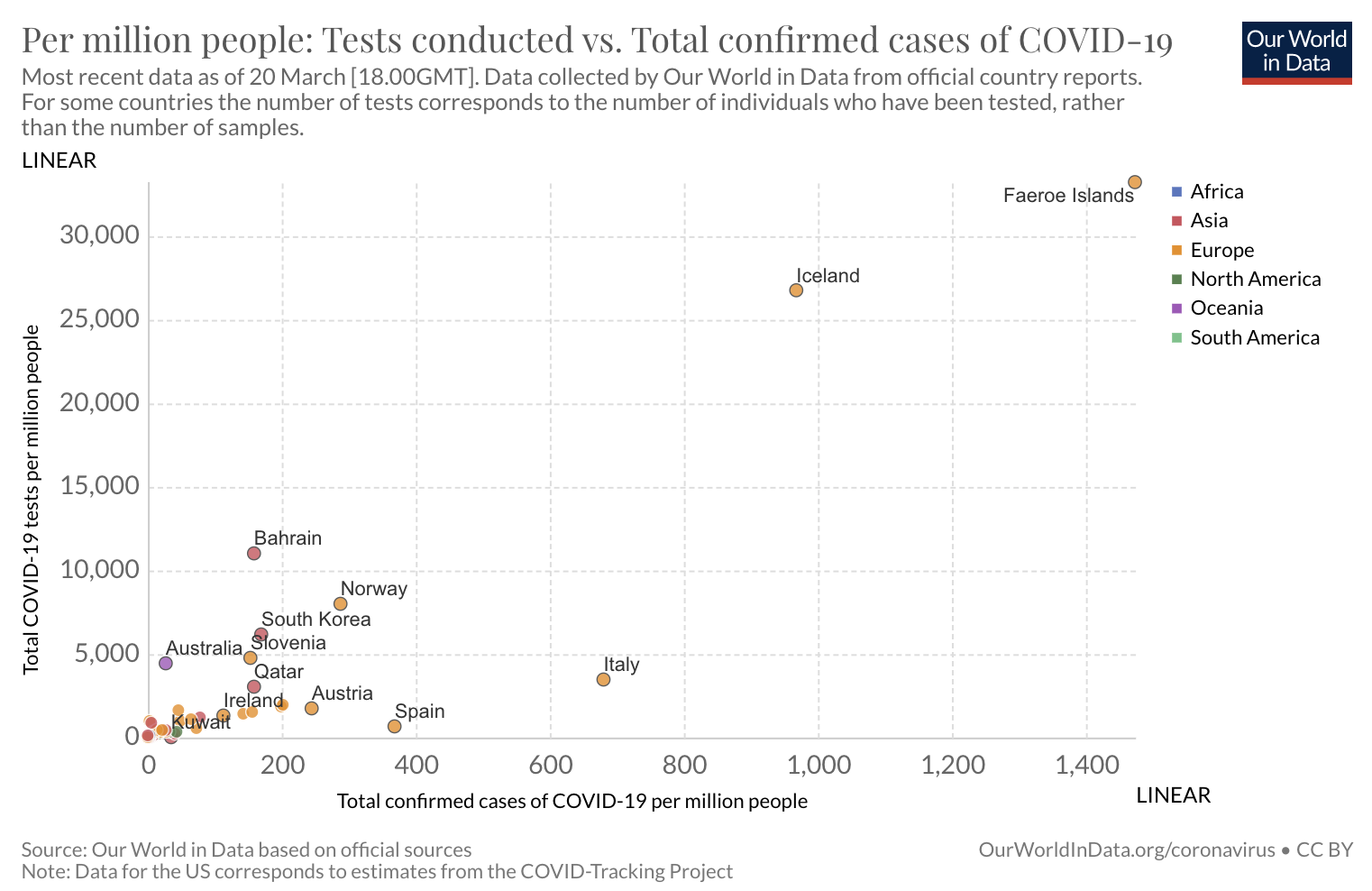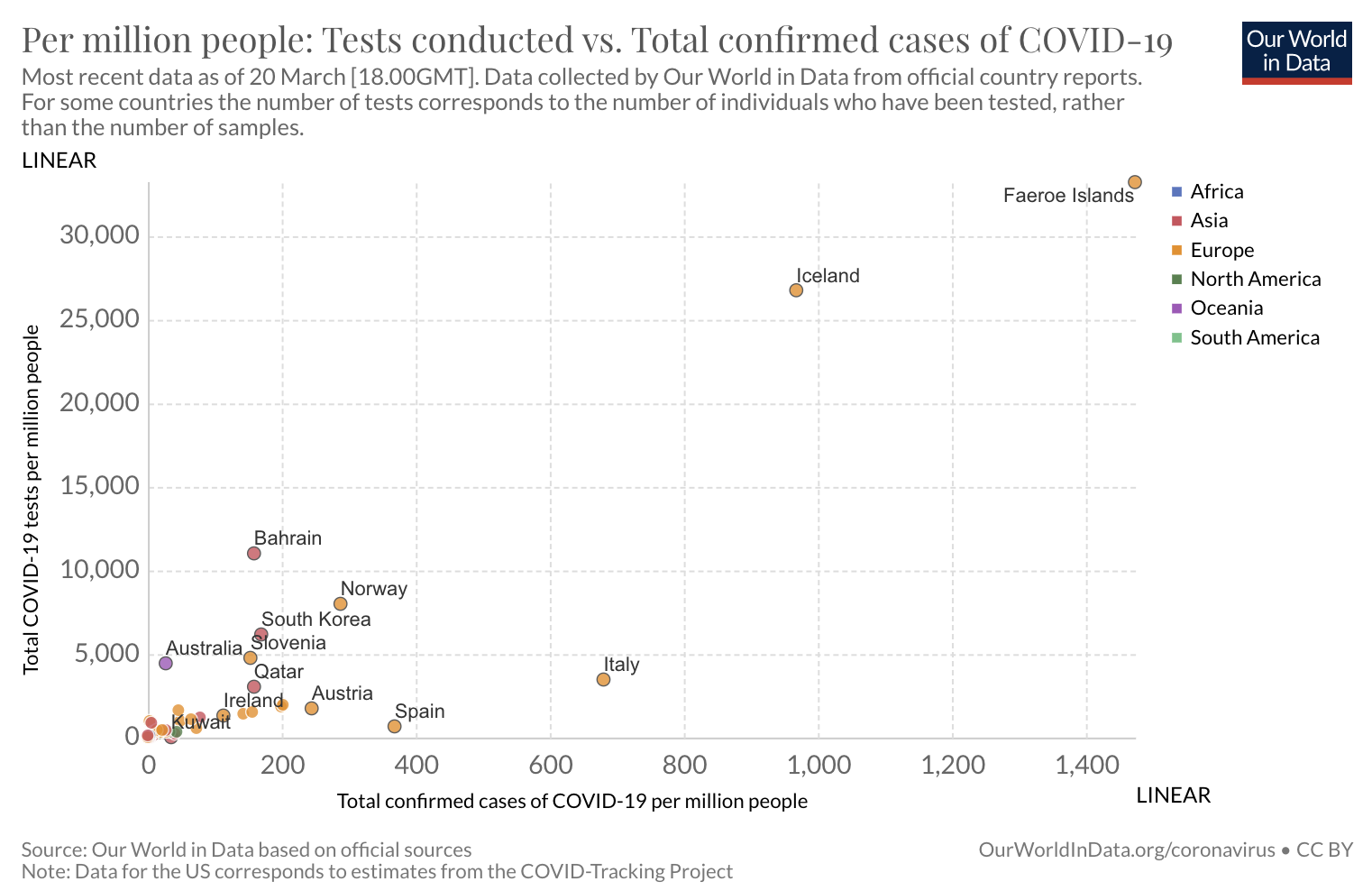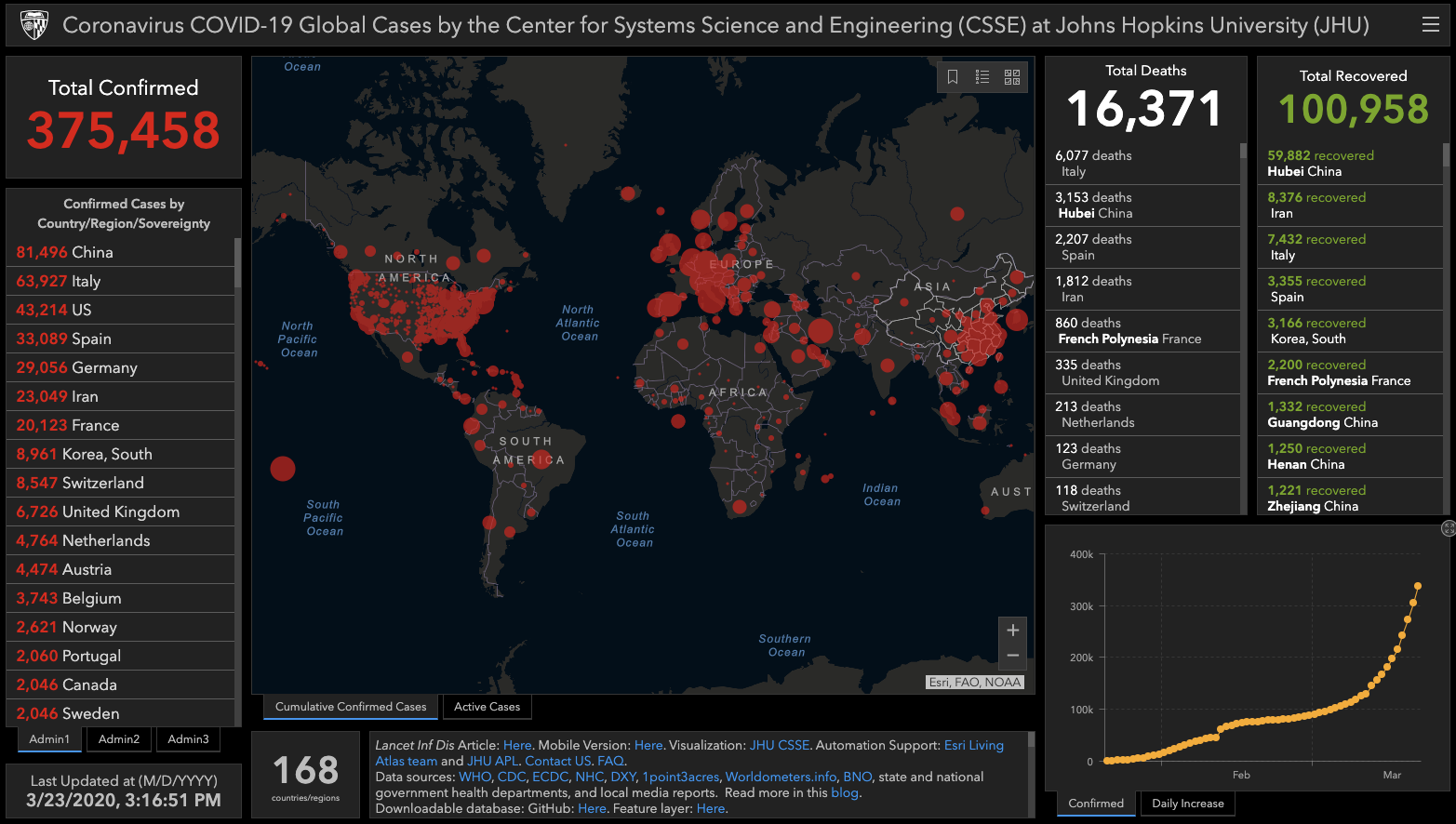We Need A COVID-19 Testing Moonshot For Better Decision-Making

Sign the petition!
https://www.ipetitions.com/petition/covid-19-moonshot-30m-tests-in-30-days
The world is in a dire decision-making situation driven by terribly skewed partial information that is driving overwhelming fear of mass loss of life and economy-ending risk.
I’m not an epidemiologist, public safety official or politician. I do know a lot about how groups of people make decisions. So I want to focus on the first point above -- the danger of skewed partial information when it comes to decision-making. Ultimately, addressing the problem of missing information offers a more optimistic view of the situation, because at least it provides us with a greater sense of control about what to do next: Stay the course on social distancing for now. Prepare our hospitals. And most importantly from a decision-making perspective, do a COVID testing moonshot.
IMPORTANT: Everything I write here supports the idea of strict lockdowns in the near-term -- in my opinion, our fear of mass death is a reasonable fear and worth the near-term economic costs. Today’s lockdowns are critical to flatten the curve of hospitalized cases and help our healthcare heroes manage the inevitable flood, no matter what we learn in the days ahead. Such decisions are not permanent, however, so how long these steps need to last can be decided and changed later as we learn more.
Terribly Skewed Partial Information
First, it is important to note that the global numbers about the epidemic tell us nothing about the rate of infection or the deadliness of the disease. How can I say that? Because, for the most part, we have no information about the prevalence of the infection or how fast the virus is spreading in the general population.
What we know with reasonable accuracy is how many people are hospitalized and how many have died in Western democracies. Both numbers are growing exponentially and likely to exceed local capacity to properly care for people in many places around the world, so we should do everything we can to expand hospital capacity and protect people at risk, especially the most vulnerable. We are testing a lot of sick people, so we know a lot about sick people and the care they need.
Given that information, today’s view of the pandemic can be summarized this way: A mildly contagious virus with a 10-30% hospitalization rate and 1-3% death rate.
That is a terrible and long-lasting situation, if true.
But like the proverb of the man in the parking lot searching for his keys beneath the light pole, we may be looking where we can see and not where the keys can be found.
Missing Information And Alternative Choices
We tend to focus on information we have (everyone doesn’t get sick immediately, terrible hospital situation, unnecessary deaths) and ignore information we don’t have. Let’s fight that bias and focus on the most important missing data: how many people have been infected, and how rapidly?
In the whole world, there are only two places that can reasonably claim to be taking a scientific approach to those aspects of this virus at this point: Iceland and the Faeroe Islands. Both have tested about 3% of their populations (that’s about 6X better than South Korea, 12X better than Italy, and 100X better than the US). Iceland is trying to test a representative population, although their testing is still skewed towards ill and exposed people. The Danes of the Faeroe Islands are tracing almost 100% of cases.

Because they have relatively low numbers of hospitalizations and deaths, the information they are uncovering has been hidden in the press. However, their information is currently the most accurate information out there about the spread of infection. Here is what they’ve learned:
- Their reported rates of infection in their general populations are about 2X higher than Italy and 10X higher than the rest of the world (about 2,000 infections per million people vs about 200 infections per million or less). This is true even though they’ve tested relatively few people and their samples were still skewed to the sick or exposed.
- Their rates of hospitalization per case (2.5% in Iceland) and death per case (0.15% for both combined) are about 10X lower than the rest of the world.
- In the Faeroe Islands, scientists doing almost complete contact tracing have found some evidence that one strain of the virus is far more contagious.
At the same time, the CDC is finding that a large percentage of hospitalizations are younger people, the death rate in Italy finally dropped, and China claims zero new “community” cases.
What if we had only the information above, and none of the other terrible true-but-skewed information flooding the news about doctors and nurses facing impossible decisions, PPE shortages and piled up coffins? What could explain what we were seeing?
One explanation is that this new coronavirus is at least 10X more contagious and at least 10X less deadly than we think it is. The CDC data could be showing that younger people are being less careful than older people, so they’re getting sick sooner. The Italy and China data could be showing that the disease runs its course in a few weeks, since a highly contagious disease is impossible to truly contain.
Given that information, the pandemic could be summarized this way: A highly contagious virus with a 1-3% hospitalization rate and 0.1-0.3% death rate.
In other words, it could be like the entire flu season getting piled into a few weeks everywhere it hits.
That would be terrible, and would kill a lot of people in those few weeks. But it would demand a very different response and alternate choices. It would make extreme action after the sickness is widespread look like it is having an effect, when in fact the disease is just running its course. It would mean that we need to act extremely fast to prepare for a spike in hospitalizations and be extremely aggressive about isolating at-risk populations, and be less focused on widespread social distancing -- there would be little purpose for other people to do much more than stay away from the vulnerable, wash their hands aggressively, eat well and get a good night’s sleep.
Of course, I have no idea if that hypothesis is right or wrong. Literally, no one in the world knows. It uses better data than today’s current dominant hypothesis based only on hospitalizations and deaths. But it doesn't answer every question or fit every data point, and even the brilliant best efforts of Iceland and the Danes of the Faeroe Islands are still incomplete and prone to error.
What should we do to guide our decisions in the face of such dizzying uncertainty?
We Need A COVID-19 Testing Moonshot
The CDC or NIH should inspire us with virus science just like NASA did with rocket science, with an even faster high-stakes moonshot right here on Earth.
We should still do testing of sick people to support healthcare decisions as we are today. We should do more testing of exposed people for containment like in South Korea and Germany. But that doesn't help much with the broader governmental and societal decisions we need to make. We must do more. Embrace the "and." No more "or."
Since everything is moving so fast, just keep it bold and simple:
Race For COVID-19 Truth -- Test 30 Million People In 30 Days : Test a random 10% sample of the entire population of 10 medium-sized US counties near the current COVID-19 outbreaks in the next 10 days, for both current infection and antibodies. The CA, NY and WA outbreaks are luckily near clusters of biotech companies, plus throw in MN and IL. Use the power of the federal government to draft and indemnify those companies and people to apply their entire laboratory workforces to the testing (other than people working on COVID therapies and vaccines). Expand it to 10% of the entire country, 30M people, in 30 days, sampling across every zip code and major demographic. Test 100% by summer if needed, and start doubling up on the first people tested to see how they're doing. How? Remember Apollo 13. Relax today's constraints on healthcare-related tests and let the scientists' ingenuity figure out how to solve the problem -- inspire them to create reagents and equipment and protocols, challenge each others’ hypothesis and data, and inform our decisions. In an American spirit, make it not about what's in the book or what the bosses say, make it about what works.
If we can’t do that, then maybe we can help Iceland overcome the testing challenges they face. They seem to have their heads on straight, and they’re focused on the most important missing information we need to make better decisions about this crisis.
Sign the petition!
https://www.ipetitions.com/petition/covid-19-moonshot-30m-tests-in-30-days

